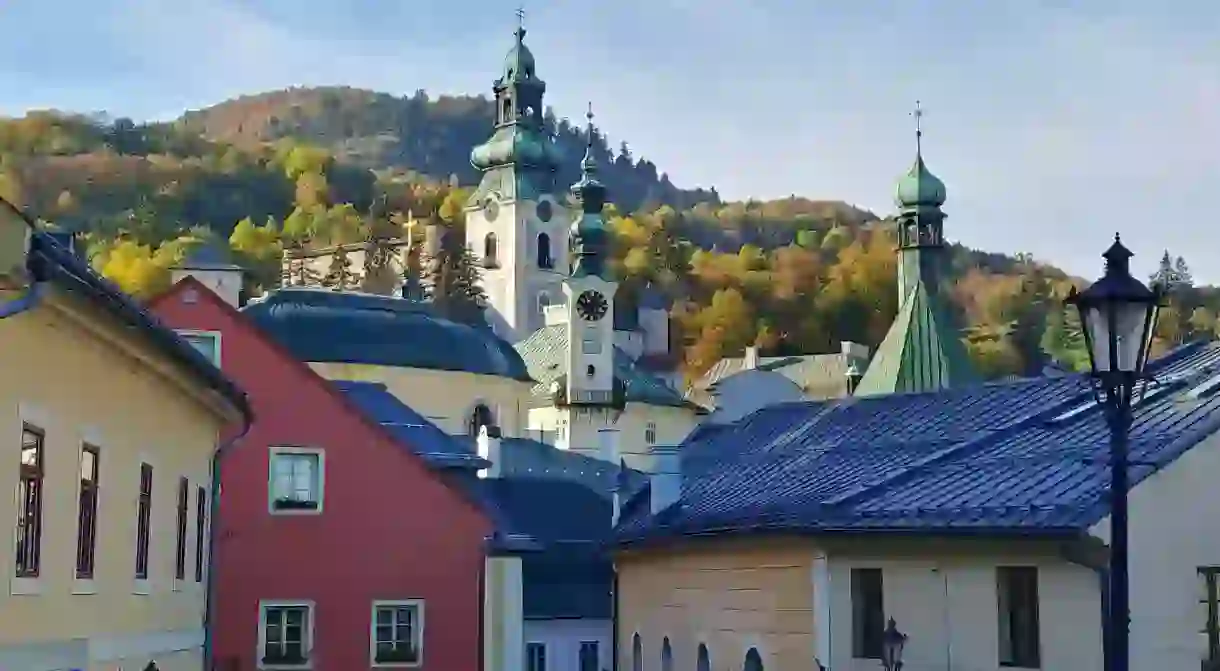The 10 Most Beautiful Towns in Slovakia

Despite all of the urban and natural beauty it has to offer, Slovakia still remains off the beaten path for many travelers. Here are our picks for the most beautiful Slovak towns.
Bratislava
Natural Feature, Architectural Landmark, Historical Landmark

Don’t be fooled by the movie Eurotrip – Bratislava, as Slovakia’s capital city, is the country’s cultural center. Visitors will be immediately captivated by everything it has to offer. As an historical home for many different nationalities, among them Slovaks, Hungarians, Germans, Czechs, and Jews, the city’s history is a veritable tapestry of different influences and events. They all weave together and begin to reveal themselves in the narrow, meandering streets of the center. Take a walk up to the striking white castle on the hill, or lose yourself in the old center. Don’t forget to stop at one of the many brew-pubs on the way.
Banská Bystrica
Natural Feature, Architectural Landmark
Located in central Slovakia in an area crisscrossed by mountain ranges, you’ll find Banská Bystrica, which originally gained fame as a copper mining town in the late Middle Ages. As this was a period of great wealth for the city, the majority of the buildings you’ll see in the historical center will reflect the architectural character of that time. In more recent history, it was also the site of the Slovak National Uprising. Here, the Slovak resistance movement launched an attempt to overthrow the Slovak collaborationist government that was in charge at the time. The beautiful main square in Banská Bystrica is named after the uprising.
Levoča
Natural Feature, Architectural Landmark
Although the town dates back to at least the 13th century, a couple of major fires in the 16th century effectively rid the town of the Gothic architecture that had once been dominant. The town was rebuilt, then, in the Renaissance style. Because of a number of notable constructions and how well preserved they are, Levoča has been inscribed on the UNESCO World Heritage list. One interesting thing to look for are the woodcarvings of Master Paul of Levoča, an impressive example of which you can find in the Church of St. James, where he carved the altar. Small though it may be, this eastern Slovak town is well worth a visit.
Nitra
Natural Feature, Architectural Landmark

One of the oldest towns in Slovakia, Nitra was first mentioned with a version of its current name in the ninth century, when it became the capital of the Principality of Nitra. This was the first known independent Slavic state in the area. It later fell under Hungarian control and so eventually became a part of the Austro-Hungarian Empire. Thus, it has the same kind of ethnically diverse history of many of the cities in the region. Even in a strong Catholic country like Slovakia, the Church is particularly strong in Nitra, so you can expect to find a number of gorgeous religious structures.
Kežmarok
Natural Feature, Architectural Landmark
Kežmarok lies in the shadow of the Tatra Mountains, so there is no shortage of impressively dramatic views. One of the original settlements there was built by a group of Carpathian Germans, but there were also groups of Saxons, Slovaks and Hungarians. One of the town’s most important inhabitants was Hungarian nobleman and warrior Imre Thokoly, whose remains have only recently been returned to his hometown. The most well known site to visit is the entirely wooden Protestant church, which contains a wooden organ and is also on the UNESCO World Heritage list. The colorful church with the mountains in the background is a truly stunning sight.
Košice
Natural Feature, Architectural Landmark

Banská Štiavnica
Natural Feature, Architectural Landmark

Trnava
Natural Feature, Architectural Landmark

Bardejov
Natural Feature, Architectural Landmark

There are a surprising number of areas to check out in Bardejov, a UNESCO site and town of only 30,000. Before WWII, Bardejov was home to a sizable Jewish community, the history of which you can explore in the Jewish quarter. In the last decade, the Bardejov Jewish Preservation Committee has launched a major attempt to restore the town’s Jewish buildings. The town center, however, is also impressive from an architectural standpoint, with medieval, Gothic, and Renaissance buildings all finding their places here. Don’t forget to check out Bardejovske Kupele, the spa town just a mile north of Bardejov.
Poprad
Natural Feature, Architectural Landmark

While Poprad as a town has much to offer any visitor, it is primarily known as one of the main gateways to Slovakia’s famous High Tatra mountains. Streams of people come through Poprad in summer and winter to take advantage of the city’s proximity to the mountains, which are worth visiting at any time of the year for skiing or hiking. However, the town itself has a charming historical center full of colorful buildings that date mostly to the 18th and 19th centuries. Fittingly, Poprad really comes into its beauty in the winter when it’s covered in snow, complete with the snowy Tatras in the background.













